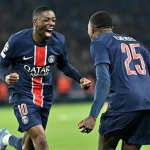Goaltending is the backbone of a successful hockey team. The unique position demands a combination of agility, foresight, and courage that is unmatched in any other sport. The goalie is the last line of defense, the one who can make or break a game, a season, or even a legacy.
Historical Perspective: The art of goaltending has evolved significantly over the years. In the early days of hockey, goaltenders stood upright, a stark contrast to the dynamic, butterfly style that has become prevalent in modern times. This transition was not just about style; it mirrored changes in the game itself, with faster play and more complex offensive tactics.
Goaltending greats like Terry Sawchuk and Jacques Plante were pioneers, with Plante being the first to regularly wear a face mask, a decision that would become standard as the importance of safety in the sport was recognized. As equipment evolved, so did the playstyle. The introduction of lighter, more protective gear allowed for greater mobility and a shift towards the butterfly style, where goaltenders would drop to their knees to cover the lower portion of the net, a method popularized by Patrick Roy in the 1980s and 1990s.
Iconic Goaltenders: Throughout hockey history, certain names have become synonymous with goaltending excellence. Terry Sawchuk, with his iconic stand-up style and raw determination, set a standard for toughness and skill. Patrick Roy’s innovative butterfly style brought a new level of strategy to the position, making him one of the most influential figures in goaltending. Dominik Hasek, with his distinctive and acrobatic manner of play, pushed the boundaries of what was possible between the pipes.
Techniques and Training: The craft of goaltending is meticulous, requiring hours of practice, precise technique, and a strong mental game. Modern goaltenders train specifically for their position, with drills designed to enhance reaction time, improve hand-eye coordination, and increase agility. They study shooters, learn patterns, and employ sports psychologists to maintain the mental toughness necessary to withstand the pressure of the role.
Impact on Culture: Goaltenders hold a special place in hockey culture. They are often seen as the lone warriors, the last stand against the opposing team’s onslaught. Masks painted with team motifs or personal symbols express individuality and have become a part of the lore of the sport, connecting fans to the mystique of the position.
Conclusion: The future of goaltending in hockey is as dynamic as the position itself. As offensive players become faster and more skilled, goaltenders must continue to adapt. Training methods and equipment will evolve, techniques will be refined, and the mental aspect of the game will grow in importance. The art of goaltending is not just about stopping pucks; it’s about being the steadfast foundation upon which teams build their dreams of victory. It’s an art form that is as critical to the game as the puck and the ice itself, and it will continue to be a defining element of the sport for generations to come.











